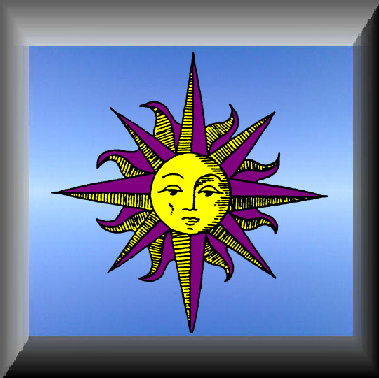VITAE ESSENTIA
The Essence of Life
Easy Access Hebs For COVID
This is a brief summary on the aid these beautiful herbs can provide in relation to support against covid. More information will follow on the herbs individual pages (some to wrote and uploaded).
Garlic (Allium sativum)

Grows in NZ, plant cloves in winter no later than 21st June – Winter solstice.
Properties: Alterative, antibacterial, antibiotic, anti-inflammatory, antimicrobial, antioxidant, antiseptic, antispasmodic, antiviral, aphrodisiac, carminative,
chologogue, diaphoretic, digestive, diuretic, expectorant, nervine, stomachic, tonic, vermifuge, vulnerary.
Supports liver function – Sulphur based chemicals – Glutathione and Methionine.
Supports heart
Thins blood
Kills parasites / worms
Treatment:
Take at onset of infections.
4-6 Cloves per day (per adult) – Take separately with food to avoid stomach upset.
Caution: avoid if breast feeding as will taint the taste of the milk.
Echinacea (Echinacea purpurea)

Echinacea purpurea is a prairie plant from the USA that grows in New Zealand, although tricky as it needs stratifying. Often this can be purchased as a hybrid
in Garden Centers.
Properties:
alterative, antibacterial, anti-inflammatory, antiseptic (GIT), antiseptic (respiratory tract), antiseptic (topically), antiseptic (urinary), antiviral
(systemically), Immunostimulant, lymphatic, sialogogue, vulnerary. Abscesses, allergies/sensitivities, autoimmune disease, boils, catarrh (respiratory),
chemotherapy (minimise side effects of), common cold, furunculosis (inflammation of the spermatic cord), herpes simplex, immune deficiency, infections
(viral and bacterial), inflammation (connective tissue), influenza, pharyngitis, post viral syndrome, septicaemia (mild), skin disorders, tonsillitis, wounds
(internally and topically).
Caution: for those with tendency to allergic reactions Asteraceae family – minimal risk with root preparations. Don’t give to cats/caution with animals as
increases salivation.
Treatment:
A must in any house hold!!!
At onset of infection take one teaspoon of dried root, decocted in a cup water for 30 minutes. Drink 3 cups a day. Make bulk preparation of teapots worth.
Olive (Olea Europaea)

Evergreen tree from the Mediterranean that is long leafed. Grows well in the North Island of New Zealand, particularly dry hot summers in coastal
areas. Will grown on stony terrain
Tree 10m height, green leaves profuse, eliptic-lanceolate, sliver underside. Paneculate olive coloured flowers that turn into drupe fruits.
Properties:
Antioxidant, bitter, tonic, hypotensive, antiseptic, antispasmodic, diuretic, hypocholestrolemic, ant-inflammatory, antiatherongenic, antithrombotic,
immunostimulant, antimicrobial and antiviral.
Olive is commonly known as being a healthy food usually from the fruit, this mainly being due to the essential fatty acids, healthy oils that are extremely
beneficial to the body. Olive is also known for having beneficial compunds that treat a whole range of issues (indicated above) these include treatment of the
heart and cancer. (Bennani-Kabachi et al, 2010; Bone, 2003, Braun and Cohen 2010; Fisher, 2009).
1 tspn dried / 2 tspn fresh per cup of boiling water, infused for at least 10 minutes. 3 times a day.
Turmeric (Curcuma longa)

Tumeric is a member of the ginger family (Zingiberaceae). It is a perennial and thrives and high temeratures and rainfall. Originally native to
India and South Asia. It’s leaves and long and simple, tapering at the end. A 3 petalled yellow flowers are often found growing near the ground. The rhizome,
which is the part frequently used in food and healing is a dark brown on the outside, yet brilliant yellow/orange within.
Properties:
Anti-cancer, anti-inflammatory, anti-microbial, anti-oxidant, anti-platelet, anti-spasmodic, carminative, cholagogue, choleretic, depurative, hepatoprotective
and hypolipidaemic (Bone, 2003, p. 436 & Mills & Bone, 2000, p. 569). External uses – vulnerary, anti-ulcer and anti-psoriatic
Turmeric is an extremely beneficial spice that can be very helpful in rebalancing the body. I often encourage patients who have a digestive disorder to make
their own Golden paste made from Turmeric, Black Pepper, Coconut oil and Water and use this at ¼ teaspoon three times a day.
Golden paste recipe This simple home hack can save a
small fortune supplement wise. Yes by all means go buy Curcumin supplements (active ingredient in Turmeric), however the recipe here, provides the ingredients
to get as much curcumin from your Turmeric at a fraction of the price. If you have green fingers, plant some Turmeric rhizomes, with the little nobbles on,
these will grow to become beautiful plants.
Turmeric is known for being an anti-inflammatory, making it a powerful remedy to ease pain and discomfort, whether this be digestive, joint ache or inflammation
in general. Turmeric also supports the liver, helping the body detoxify waste products, it also has antiparasitic properties, helping to removing parasites
within the body. Turmeric supports the cardiac and nervous system.
Dandelion (Taraxacum officinale)

Asteraceae family.
This herb literally grows all around the world. It is a perennial with a dep tap root and a floret of leaves oblanceolate to
obovate, edged with jagged margins and a pinkish red stem at the lase of leaf. A single purplish stem produces a yellow corolla flower which becomes a white seed
pappus, each seed having a orb-like head. It produces a milky latex.
Properties:
Anti-rheumatic, choleretic, diuretic (laxative), bitter tonic.
Vilified in the Round up spray and walk away adverts, as target for gardeners to destroy. Yet is a nutrient dense plant, that supports the liver, gall bladder
(roots) pancreas (flowers / leaves) and kidneys (leaves) cardiac by proxy, supporting digestion, and reducing bone pain. Leaves have been found to protect the
body from Spike proteins.
Eat leaves as part of the daily diet or add to smoothies.
Drink tea of leaves, flowers or roots. 1 tspn dried / 2 tspn fresh per cup of boiling water, infused for 10 minutes.
Selfheal (Prunella vulgaris)

Selfheal is a common garden weed, that has it’s origins in Eurasia but now grows worldwide. It is a temperate plant and likes growing in disturbed
soils, you will often find it on roadsides, woodland edges, meadows and fields.
A member of the mint family. The plant will grow to approximately 50cm.Obvate to lanceolate leaves grow opposite one another and are approximately 5 cm long.
Square stems support two lipped flowers, the upper being a darker shade of purple than the lower. The side stems easily self root when touching the soil.
Properties:
Vulnerary, styptic, antiseptic, antispasmodic, astringent, antioxidant.
This common pretty weed that is often pulled out the garden has some special qualities. Research has found that one of the compounds of the plant protects the
body against spike proteins.
Make a tea from 2 teaspoons of fresh leafs or 1 teaspoon of dried in boiling water for 10 minutes.
Fennel (Foeniculum vulgare)

Apiacea family.
Originally from Southern Europe and the Mediterranean. Grows 2m tall with a thick tap root, hollow cylindrical stems and feathery pinnate leaves. Golden umbels
of flowers that are 1-2 cm long turn into the 3-6mm long ribbed seeds. Fennel grows all around the globe, often on undeveloped land in full sunshine.
Properties:
Anti-inflammatory, antimicrobial, antispasmodic, carminative, diuretic, expectorant, galactagogue, oestrogen modulating, orexigenic and stomachic
(Fisher, 2009, p. 9; Bone, 2003, p. 206)
Another common weed, often found growing on waste land. The seeds are rich in Shikimic acid, which is a protective component against covid.
An easy way to extract this is to make a tea of the seeds. 1 teaspoon of seeds decocted in boiling water for approximately 20m (simmer in a saucepan and keep
the lid on until it has cooled). Add ½ teaspoon to ½ teaspoon Star anise for a more anise flavoured, tea. Star anise has been linked with anti covid properties
and removal of spike proteins.
Kawakawa (Macropiper excelsum)

Piperaceae family.
Native plant of NZ, grows in the North Island and around Banks Peninsula South Island. Related Polynesian Kava. Kawakawa tends to grow on the outer edge of the
bush and lowland forest. The tree grows upto 6m tall, with nodule joints. It has heart shaped leaves with prominent veins, these being glossy on top. Health
plants are often devoured by the Kawakawa Loper moth, these are the best for medicine. This plant has both male and female trees, the male produce yellow
flowers, the female produces the banana shaped fruit. The fruit and leaves are both aromatic and taste peppery.
Properties:
Alterative, anaesthetic, analgesic, anticatarrhal, antidyspeptic, antifungal, anti-inflammatory, antimicrobial, antioxidant, antiseptic, antispasmodic, aromatic,
bitter, blood cleanser, blood sugar regulator, bronchodilator, diaphoretic, warming digestive, diuretic, expectorant, hepatic, laxative, nervine, nutritive,
tonic, vasodilator and vermifuge (Phytomed, 2009 & Selfheal, n.d.).
1 tspn dried / 2 tspn fresh, per cup of boiling water, infused for 10 minutes. 3 cups a day, no more than 10 days in a row, then 10 day break.
30 Leaves, steeped in 2.5L of boiling water, simmered for an hour, or until leaves dissolve, keeping the lid on. Allow liquid to cool,, strain and bottle (dark
liquid). Drink ½ a cup twice a day.
Coriander (Coriandrum sativum)

Coriander is a member of the Apiaceae family which originally comes from the Mediterranean. It is an annual plant preferring cooler conditions to
grow in, often only having a short life during summer. The leaves grow on slender hollow stems and are often feathery and toothlike. It has umbels of tiny white
flowers. producing small, round, hollow, yellow-brown seeds, with longitudinal strips.
Properties:
Seed and leaf: anti-bacterial, anti-diabetic, anti-fungal, anti-inflammatory, anti-microbial, anti-rheumatic – external use, anti-spasmodic (stomach cramps),
anxiolytic, carminative, digestant – and stimulates the appetite, diuretic, expectorant, stimulant (Murray et al, 2008, p. 482).
Leaf: mobilizes heavy metals from the brain and central nervous system (Georgiou, 2005, pp. 1-8).
Use Coriander in smoothies, or in your cooking. If removing heavy metals important to eat coriander consistently and raw over 3-5 days. You could make into a
pesto. If you don’t like the taste make into capsules.
Tea can be made 1 tspn leaves / seeds or 2 teaspoon fresh, per cup of water, simmered for 20 minutes three times a day.
White Pine (Pinus strobus)

Pinaceae (Pine Family)
This tree is originally one of the native pines found in USA. It grows approximately 25m tall. An conifer, it is a highly erect tree producing thin needles
which grow in clusters of 5. During spring it produces pollen from it’s flowers, many people have allergies to this – hayfever.
Traditionally it was used by the Indigenous people as a vulnerary or for the treatment of wounds. It was also used for respiratory complaints such as colds, flu,
sore throats, bronchitis, tuberculosis and asthma. Pine needles also supported the kidney and lessened experiences of rheumatism and scurvy
Pine needles have been found to be an effective treatment of covid the Shikimic acid in the pines has been identified as reducing spike proteins. Roche
pharmaceuticals extracted phyto (plant) based Skikimic acid and made Tamiflu.
Please not the majority of tree found in forestry in New Zealand are Pinus radiata, which is a different species. Pine trees can be hard to identify as so many
look similar. Some pine trees can be mistaken and are actually poisonous i.e. Yew tree Taxus baccata whilst ectracts of this tree are used for cancer treatment
it is deadly poisonous if consumed. Please do not forage unless you are 110% sure you have the right tree or with someone who has this knowledge.
1 teaspoon of dried or 2 teaspoons of fresh infused in boiling water for at least 10 minutes, maximum of three times a day.
Do not drink if intending to get pregnant or allergic to pine.
Nettle (Urtica dioica)

Urticaceae family:
Originally from Britain, Europe and Asia. The plant grows in partial shade and likes woodlands. It grow up to 1.5m and has a square stem. Obvate leaves with
toothed margine grow opposite one another, ths have fine downy hairs that sting, causing blisters, hence the name Urtica – to burn.
Properties:
Antihaemorrhagic, astringent, diuretic, nutritive (Fisher, 2009, p. 249), anti-allergic, antihistamine, antirheumatic, counterirritant (topically with fresh
herbs), depurative and styptic. The root is antiprostatic (Bone & Mills, 2013, p. 760), antimicrobial, heavy metal chelation, liver detoxification phase 1 and
2, antioxidant.
Nettle can be taken as a greenleafy, it needs to be heated through cooking or in water before eating to rid of sting. Nettle soup is a highly nutritive food.
Nettle is an extremely beneficial herb not only full of nutrients it helps to cleanse and purify the blood as well as providing a natural antihistamine
- beekeepers best friend.
1 tspn dried / 2 teaspoon fresh, infused in boiling water for 10 minutes, 2 times a day.
St. John's wort (Hypericum perforatum)

Family: Clusiaceae / Guttiferae
Creaping perennial that grows up to 1m tall. Found in Europe, Asia and Africa, often growing in waste lands, sides of roads and paddocks. It has many oblong /
linear light green opposite leaves, with multiple dots - oil glands. Multiple golden flowers grow in dense cymes, these too have multiple dots - oil glands.
Properties:
Antidepressant, antiseptic, antiviral, anxiolytic, astringent, nervine, (Bone, 2007, p. 64), anti-inflammatory and sedative, and topically it is analgesic,
antimicrobial and vulnerary (Fisher, 2009, p. 82).
St John’s wort is most commonly used to alter and improve people's moods due to it's antidepressant qualities. Yet St. John's wort is also aa powerful
antiviral and has previously been used for the treatment of corona viruses. Recent research indicates it is able to protect the body against spike proteins.
1 dried teaspoon of aerial parts / 2 fresh to 1 cup of boiled water, infused for 10 minutes, max three times a day.
Milk Thistle (Silybum marianum)

Astaraceae family.
Thistle’s once from the Mediterranean now grow all around the globe. Milk thistle grows approximately 2m tall, deep tap roots, lancet to elliptic leaves that
are gloss and green, with a wavy, spiked edge with white veins. The stems are erect and have hair as the leaves do. A branched stem contains a single stem/
flower atop a rosette of spikes, purple and approximately 2.5cm in diameter. Multiple 7mm brown seeds are formed, with a yellow ring at the end.
Milk thistle is a rich source of glutathione, this is an essential antioxidant in the body, enabling the liver, kidney’s muscles and heart to function.
Glutathione and high dose vitamin C have also been found to increase lung capacity. Cysteine from N-Acetyl Cysteine (NAC) makes Glutathione.
Properties:
Digestive tonic, galactagogue, hepatoprotective (Fisher, 2009, p. 49), antioxidant, choleretic, hepato-trophorestorative (Bone, 2003, p. 326).
1 tspn dried seeds / 2 tspn fresh to 1 cup of boiled, infused for at least 10 minutes.




